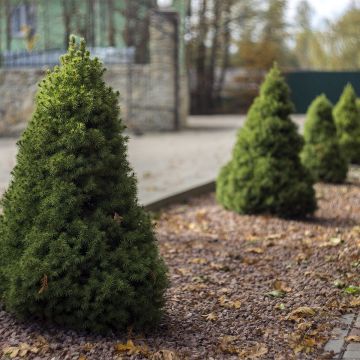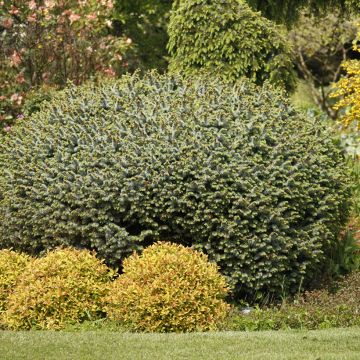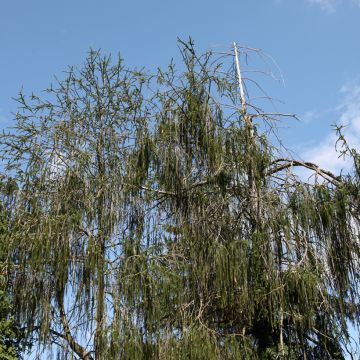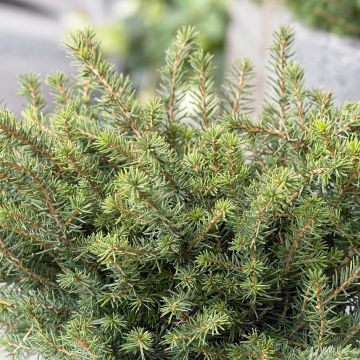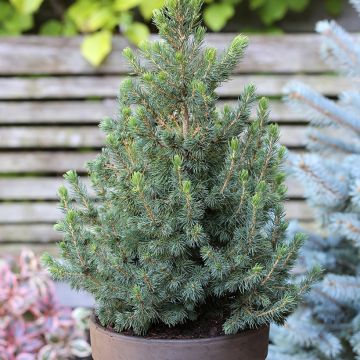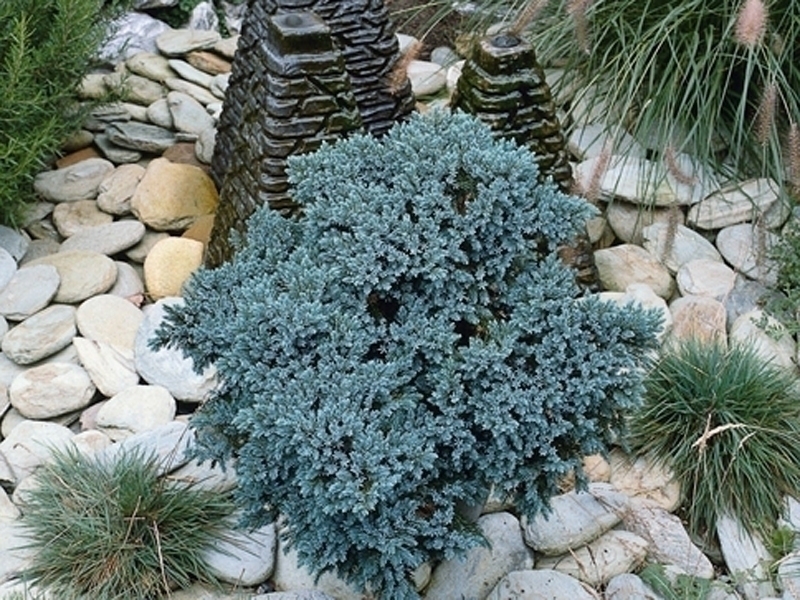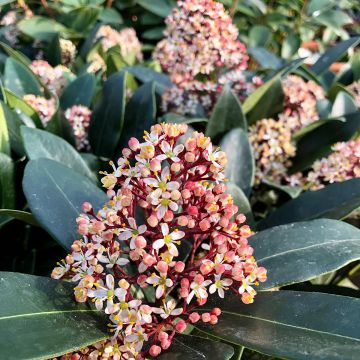

Picea pungens Iseli Fastigiate - Epicea bleu
View more pictures
Hide images
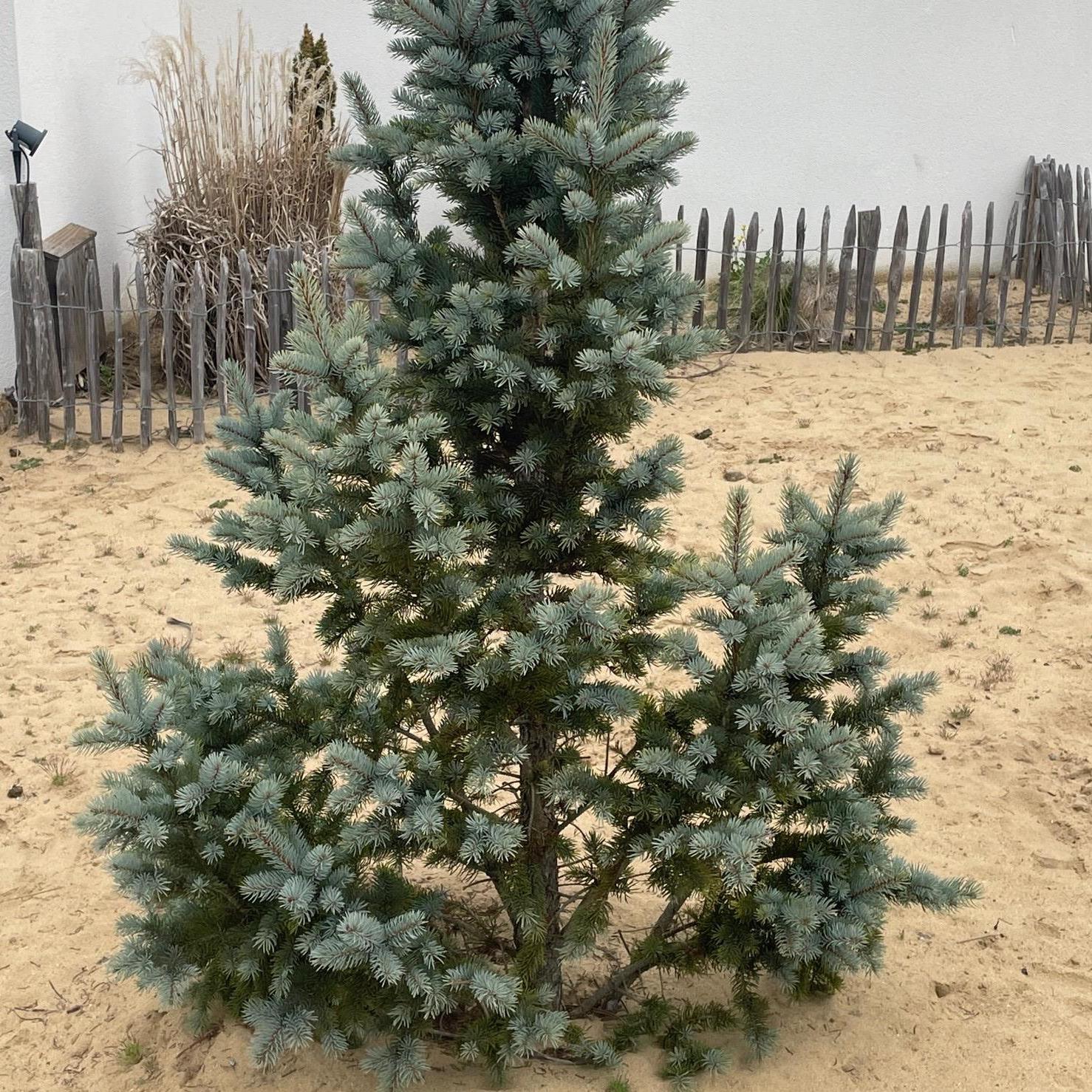
Paul-Louis P.

5 years after the blue spruce featured on the site...
Paul-Louis P. • 78 FR
Picea pungens Iseli Fastigiate - Blue Spruce
Picea pungens Iseli Fastigiate
Blue Spruce, Colorado Blue Spruce, Colorado Spruce, Silver Spruce
Very beautiful silhouette for this young plant. It already has some character...! Super fast delivery and impeccable packaging.
Jean-Claude, 29/03/2021
Special offer!
Receive a €20 voucher for any order over €90 (excluding delivery costs, credit notes, and plastic-free options)!
1- Add your favorite plants to your cart.
2- Once you have reached €90, confirm your order (you can even choose the delivery date!).
3- As soon as your order is shipped, you will receive an email containing your voucher code, valid for 3 months (90 days).
Your voucher is unique and can only be used once, for any order with a minimum value of €20, excluding delivery costs.
Can be combined with other current offers, non-divisible and non-refundable.
Why not try an alternative variety in stock?
View all →This plant carries a 24 months recovery warranty
More information
We guarantee the quality of our plants for a full growing cycle, and will replace at our expense any plant that fails to recover under normal climatic and planting conditions.

Would this plant suit my garden?
Set up your Plantfit profile →
Description
Picea pungens 'Iseli Fastigiate' is a reduced form of the Colorado blue spruce that grows in a slender and regular cone shape, forming a small tree full of elegance and character over time. Its very dense foliage is blue in spring, then takes on a softer grey-blue-silvery shade, while remaining very bright. Its needles are shorter at the end of the fastigiate branches, giving its growth a unique and archirtectural appearance. Its slow growth and modest size allow it to fit into a small garden, either as a standalone or in a mass. It is a magnificent conifer that is undemanding, tolerating pollution, heat, and occasional drought once well established.
Originating from the west coast of the United States, and the Rocky Mountains of North America, up to Canada, the Picea pungens, also known as the Colorado blue spruce or blue spruce, is a hardy evergreen conifer belonging to the pine family. In its natural environment, it grows slowly, presenting an elegant and regular conical habit with very layered horizontal branches. This tree can reach a height of 25 to 40 m (82 to 131 ft 2 in) and tolerates limestone soils and some drought.
The 'Iseli Fastigiate' variety, derived from this species, stands out with its unique habit and very refined appearance. It is a medium-sized conifer, with a conical and fastigiate habit that is very slender in its youth, widening somewhat over time. Its growth is slow, so that at 20 years old, it reaches about 7 m (23 ft) in height, and 2.5 m (0 and 8 ft 2 in) in width at the base. It produces short and thick, upward-growing branches, covered at their ends with very short needles, longer at the base. They are prickly and arranged in dense brushes around the branches. Its young spring shoots are of a very intense light blue colour. For the rest of the year, its colour is intermediate between grey-blue and silver. Its rough, scaly, grey bark is quite decorative.
With its exceptional foliage, impeccable habit, and ease of cultivation, the 'Iseli Fastigiate' blue spruce will become the focal point of the garden. It thrives in many situations, under various climates, as long as the soil is well-drained and not too chalky, and the exposure is sunny. This plant pairs well with stone walls, geometric lines of swimming pools, and brickwork. It can be associated with bushy conifers such as Microbiota decussata, with its bronze winter foliage, or with more rounded varieties like Picea glauca Echiniformis. The architectural qualities of conifers naturally impose themselves in the design of a contemporary garden, which prefers the aesthetics of shapes, silhouettes, and textures over flowers. These plants structurally define a flower bed, mark pathways and border the terrace, replacing the strong presence of trimmed boxwood or holly. The key is to play with volumes and colours.
Picea pungens Iseli Fastigiate - Blue Spruce in pictures




Plant habit
Foliage
Botanical data
Picea
pungens
Iseli Fastigiate
Pinaceae
Blue Spruce, Colorado Blue Spruce, Colorado Spruce, Silver Spruce
Cultivar or hybrid
Other Picea
View all →Planting and care
Picea pungens 'Iseli Fastigiate' is best planted from September to November and from February to June in fertile, well-drained, light, neutral, or slightly acidic soil, even occasionally dry in summer. A sandy, loamy, humus-rich, or rocky, slightly chalky soil will be perfectly suitable. Choose a sunny (or at most partially shaded) location, sheltered from prevailing winds. In overly wet conditions, it will be more susceptible to root rot. Soak the root ball well before planting. You can add organic fertilizer at planting and water generously in the first years and in case of prolonged drought. In poor soil, apply a special conifer fertilizer every year in April and weed the soil in summer. This extremely hardy conifer dislikes heavy, waterlogged soils in winter. Pruning is not necessary as this plant expresses its full potential when allowed to grow freely.
Planting period
Intended location
Care
Planting & care advice
-
, onOrder confirmed
Reply from on Promesse de fleurs
Similar products
Haven't found what you were looking for?
Hardiness is the lowest winter temperature a plant can endure without suffering serious damage or even dying. However, hardiness is affected by location (a sheltered area, such as a patio), protection (winter cover) and soil type (hardiness is improved by well-drained soil).

Photo Sharing Terms & Conditions
In order to encourage gardeners to interact and share their experiences, Promesse de fleurs offers various media enabling content to be uploaded onto its Site - in particular via the ‘Photo sharing’ module.
The User agrees to refrain from:
- Posting any content that is illegal, prejudicial, insulting, racist, inciteful to hatred, revisionist, contrary to public decency, that infringes on privacy or on the privacy rights of third parties, in particular the publicity rights of persons and goods, intellectual property rights, or the right to privacy.
- Submitting content on behalf of a third party;
- Impersonate the identity of a third party and/or publish any personal information about a third party;
In general, the User undertakes to refrain from any unethical behaviour.
All Content (in particular text, comments, files, images, photos, videos, creative works, etc.), which may be subject to property or intellectual property rights, image or other private rights, shall remain the property of the User, subject to the limited rights granted by the terms of the licence granted by Promesse de fleurs as stated below. Users are at liberty to publish or not to publish such Content on the Site, notably via the ‘Photo Sharing’ facility, and accept that this Content shall be made public and freely accessible, notably on the Internet.
Users further acknowledge, undertake to have ,and guarantee that they hold all necessary rights and permissions to publish such material on the Site, in particular with regard to the legislation in force pertaining to any privacy, property, intellectual property, image, or contractual rights, or rights of any other nature. By publishing such Content on the Site, Users acknowledge accepting full liability as publishers of the Content within the meaning of the law, and grant Promesse de fleurs, free of charge, an inclusive, worldwide licence for the said Content for the entire duration of its publication, including all reproduction, representation, up/downloading, displaying, performing, transmission, and storage rights.
Users also grant permission for their name to be linked to the Content and accept that this link may not always be made available.
By engaging in posting material, Users consent to their Content becoming automatically accessible on the Internet, in particular on other sites and/or blogs and/or web pages of the Promesse de fleurs site, including in particular social pages and the Promesse de fleurs catalogue.
Users may secure the removal of entrusted content free of charge by issuing a simple request via our contact form.
The flowering period indicated on our website applies to countries and regions located in USDA zone 8 (France, the United Kingdom, Ireland, the Netherlands, etc.)
It will vary according to where you live:
- In zones 9 to 10 (Italy, Spain, Greece, etc.), flowering will occur about 2 to 4 weeks earlier.
- In zones 6 to 7 (Germany, Poland, Slovenia, and lower mountainous regions), flowering will be delayed by 2 to 3 weeks.
- In zone 5 (Central Europe, Scandinavia), blooming will be delayed by 3 to 5 weeks.
In temperate climates, pruning of spring-flowering shrubs (forsythia, spireas, etc.) should be done just after flowering.
Pruning of summer-flowering shrubs (Indian Lilac, Perovskia, etc.) can be done in winter or spring.
In cold regions as well as with frost-sensitive plants, avoid pruning too early when severe frosts may still occur.
The planting period indicated on our website applies to countries and regions located in USDA zone 8 (France, United Kingdom, Ireland, Netherlands).
It will vary according to where you live:
- In Mediterranean zones (Marseille, Madrid, Milan, etc.), autumn and winter are the best planting periods.
- In continental zones (Strasbourg, Munich, Vienna, etc.), delay planting by 2 to 3 weeks in spring and bring it forward by 2 to 4 weeks in autumn.
- In mountainous regions (the Alps, Pyrenees, Carpathians, etc.), it is best to plant in late spring (May-June) or late summer (August-September).
The harvesting period indicated on our website applies to countries and regions in USDA zone 8 (France, England, Ireland, the Netherlands).
In colder areas (Scandinavia, Poland, Austria...) fruit and vegetable harvests are likely to be delayed by 3-4 weeks.
In warmer areas (Italy, Spain, Greece, etc.), harvesting will probably take place earlier, depending on weather conditions.
The sowing periods indicated on our website apply to countries and regions within USDA Zone 8 (France, UK, Ireland, Netherlands).
In colder areas (Scandinavia, Poland, Austria...), delay any outdoor sowing by 3-4 weeks, or sow under glass.
In warmer climes (Italy, Spain, Greece, etc.), bring outdoor sowing forward by a few weeks.






























